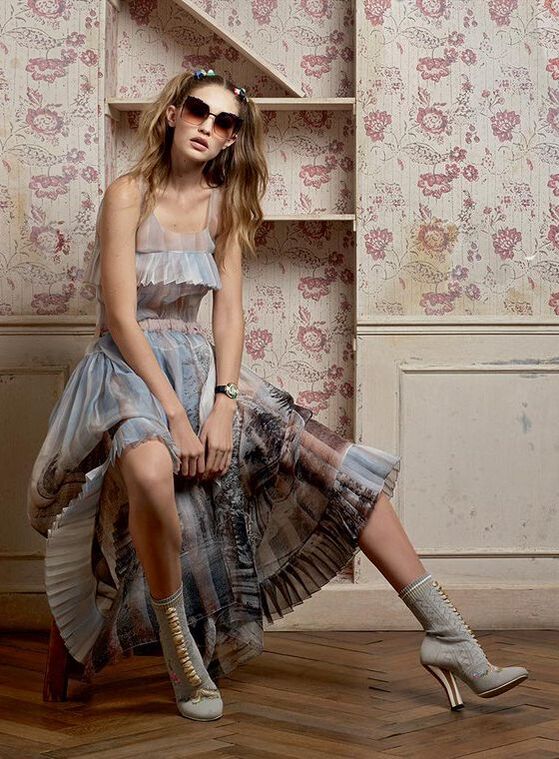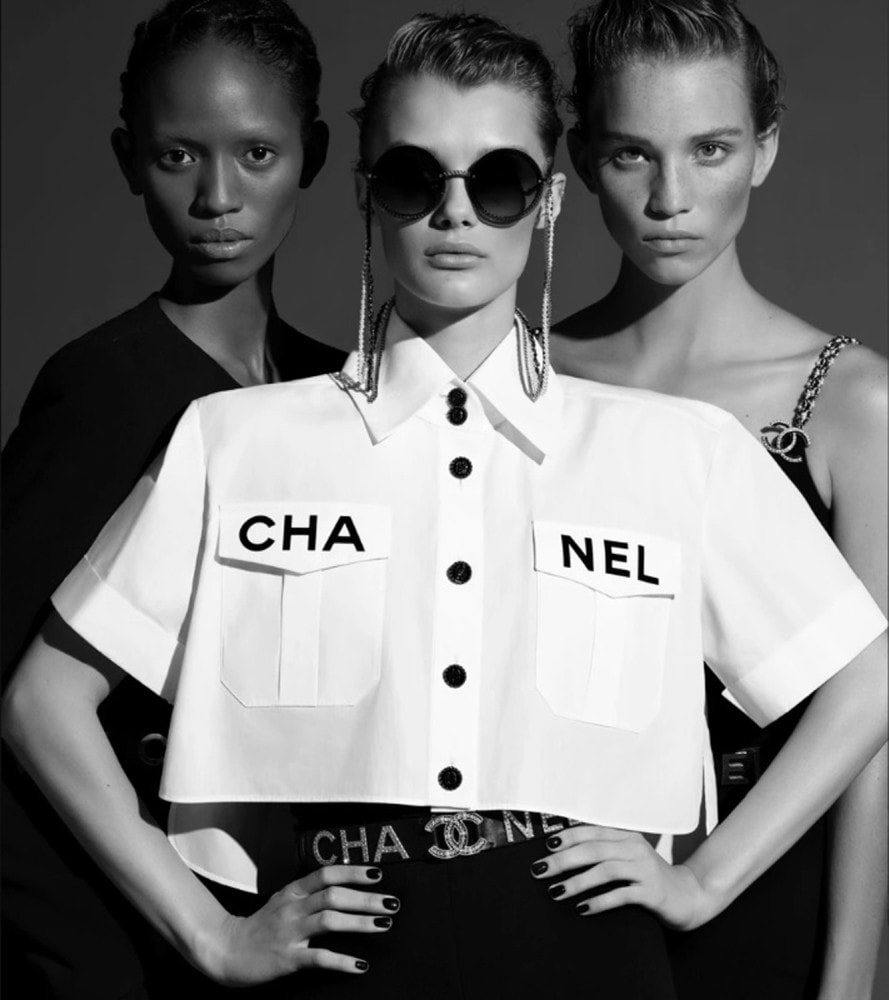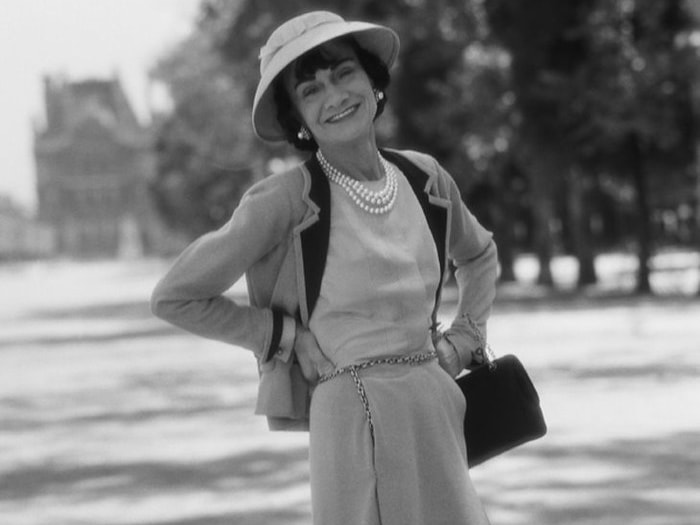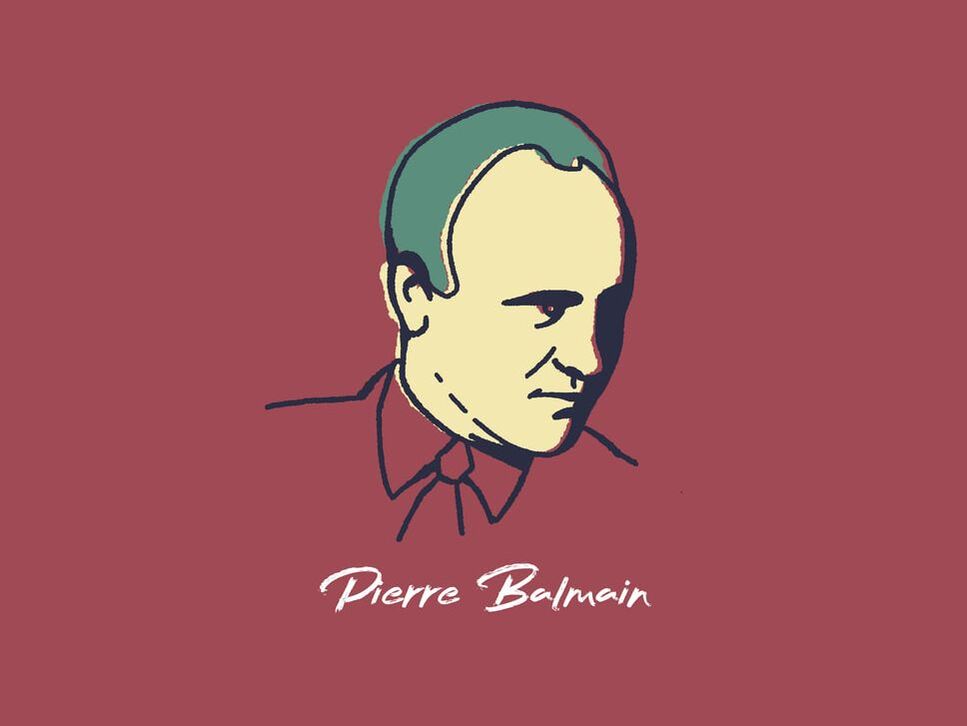|
25/8/2020 Biographies in brief: Karl LagerfeldAn in-depth look at the life and times of fashion's most prolific designer Early LifeKarl Lagerfeld was born in Hamburg in 1933, as Karl Otto Lagerfeldt, to a wealthy German businessman and Swedish mother. Despite the war, Lagerfeld’s childhood was one of relative comfort, spent with his two older sisters Martha Christiane and Thea (a half sister from his father’s first marriage). In 1947, when Lagerfeld was 14, the family moved to Paris and he was enrolled in the Lycée Montaigne to study drawing and history and it wasn’t long before he found fashion. Entering the fashion worldLagerfeld’s first break in fashion came as the result of a design competition organised by the Secrétariat International de la Laine (International Wool Association) in 1954. Lagerfeld’s sketch of a coat took first prize catching the eye of Pierre Balmain, at the time one of the great Parisian couturiers and a judge of the contest, who offered Lagerfeld a position as his design assistant as a result. With a foot in the door, Lagerfeld’s prodigious talent became clear and, aged just 20, he was appointed art director for fashion designer Jean Patou. Lagerfeld honed his craft at the house for five years, working primarily on couture collections, developing the broad range of skills and aesthetics that would serve him well throughout his career. Making a name for himselfNot content working under the direction of others, but not yet ready to open his own house, Karl Lagerfeld became one of the world’s first fashion design freelancers in 1962. His work for various brands across Europe eventually led him to Chloe, where he was brought on by founder Gaby Aghion to work alongside a number of other designers. Within three years he was given sole creative control of the house, famed for its romantic, free-spirited designs, and remained there until 1983. His time at the house put him on the international fashion map - with his mammoth 200 look SS74 collection being a particular highlight for its new way with separates. WWD pronounced Lagerfeld ‘the most original’ ready-to-wear designer in Paris shortly after. However, not content with just one fashion house under his direction, Lagerfeld’s work at Chloe soon caught the attention of the bosses at Fendi, a once famed house that had fallen on hard times and was in desperate need of revitalisation. Lagerfeld, evidently, was more than up to the job and he remained the brand’s creative director from 1965 until the end of his life, transforming it into one of the most famous and coveted fashion brands in the world. During this time, the ever prolific Lagerfeld continued his freelance work, most notably creating couture designs for Italian brand Tiziani - where one of his most important clients was Elizabeth Taylor - until 1969. The Chanel yearsWhen his contract at Chloe ended in 1983, Lagerfeld left the brand and signed on as the new creative director at Chanel. Working only part-time initially (on a rumoured $1 million salary), WWD reported at the time that his reception was less than warm. While Lagerfeld was frustrated with the house’s slow pace of couture production and resistance to change, those already working at the brand are said to have been unsupportive of Lagerfeld’s move towards modernisation and unfriendly toward his new hires, including his design assistant Hervé Leger. And while his debut collection for the house received mixed reviews, with WWD’s stating Lagerfeld “committed too many Chanel Dont’s and not enough Do’s”, his calculated choice to reference the house’s designs from the Twenties and Thirties, rather than its celebrated 1950’s revival, eventually won round critics. Lagerfeld would continue to flourish at the brand for almost four decades, becoming almost as synonymous with Chanel as Coco herself and, in his always innovative way, sweeping in a new fashion tradition: the blockbuster show. Lagerfeld had been experimenting with more spectacular runways while at Chloe but, it was at Chanel that he found the funding and creative support to really let his imagination run wild. Recruiting big name models such as Jerry Hall, Linda Evangelista and Ines de la Fressange from the get go, Lagerfeld may have consistently chosen the Grand Palais as his venue - but it never looked the same twice. From sets featuring giants shoes and handbags to the inside of a palatial beachside villa and, in the past few years alone, a supermarket, cruise ship, ski resort and the rooftops of Paris, it’s no coincidence that Chanel has been the hottest ticket at Paris Fashion Week for decades. Lagerfeld works even harderDespite his bumpy start at Chanel, and while still working on numerous collections for Fendi every year, in 1984 the work-centric Lagerfeld decided the time had come to launch his eponymous label. Offering an edgier, harder look than the luxurious furs of Fendi and the suits and tweeds of Chanel, the Karl Lagerfeld brand, like the man himself, was characterised by lots of black, tightly fitted silhouettes and racier designs. It was an immediate success and, by 1988, Lagerfeld had inked a deal with Steilmann to produce a more affordable KL by Karl Lagerfeld line.
The diet follows a three-phase plan in which one may eat only protein powder and select vegetables for the first three months, protein powder for breakfast and dinner with a lunch of fish, vegetables and eggs for the next five months and the same for the final four months with the addition of low glucose fruit and wholemeal bread. Dietary supplements must be taken throughout to compensate for the lack of essential vitamins and minerals. Unlike most diets, Lagerfeld made no bones about the fact that his regime was not fun or easy. “It has to be a sort of punishment,” he explained in the preface to the book. “Without real commitment, without the determination to understand and accept the diet, all those who embark upon it are destined to failure.” Accordingly, exercise is discouraged as it promotes hunger while the liberal use of artificial sweetener and diet sodas is encouraged to suppress the appetite - leading to Lagerfeld’s long standing association with Diet Coke. Mass appealPerhaps thanks to his famous diet, which brought Lagerfeld’s name to the attention of those well outside the fashion sphere, the Noughties proved an illustrious decade for Karl Lagerfeld. In 2004 he became the first high fashion designer to create a collection for H&M - the line sold out almost immediately and spawned a new era of high end/high street collaborations. His eponymous brand was also sold to Tommy Hilfiger Corp the same year and, while this would see the end of the KL by Karl Lagerfeld line, it also marked a period of international expansion and the addition of accessories and a denim range. The decade was capped with two great honours. In 2008 Lagerfeld’s name was added to Le Petit Larousse Illustré (the French version of the Oxford English Dictionary) and, in 2010, he was awarded the Couture Council Fashion Visionary Award by New York’s Fashion Institute of Technology - a special honour created just for Lagerfeld. Of course, while all this as happening, Lagerfeld’s work at Chanel and Fendi was still ticking along with both houses growing substantially. So, despite having recently acquired his most prized possession - a cat named Choupette who famously travelled by private jet and had three maids - Lagerfeld took his most famous show on the road in 2012. Teaming up with Carine Roitfeld, Lagerfeld created The Little Black Jacket, a travelling photography exhibition of his muses wearing the house’s iconic jacket.
Due to his well known dislike of funerals, Lagerfeld was laid to rest in a small ceremony with his ashes scattered near those of his mother Elisabeth and his late partner Jacques de Bascher. He was succeeded at Chanel by longtime collaborator Virginie Viard and at Fendi by Silvia Venturini Fendi, formerly creative director of menswear and accessories. The eponymous Karl Lagerfeld brand continued under the design directorship of the Lagerfeld-appointed Hun Kim, who has taken inspiration from an archive of more than 60,000 of the late designer’s photos and sketches. Comments are closed.
|
Categories |
Search by typing & pressing enter





